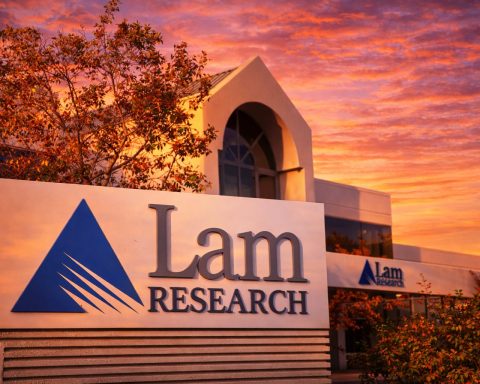- SpaceX launched over 5,000 pounds of cargo to the ISS on Aug. 24, 2025, aboard a Falcon 9 rocket, with the Dragon capsule autonomously docking on Aug. 25 during NASA’s 33rd commercial resupply mission.
- Starship’s 10th flight test was scrubbed on Aug. 24, 2025, 30 minutes before liftoff due to a ground systems issue, with a retry planned as soon as Monday.
- The brightest and closest fast radio burst ever recorded, nicknamed RBFLOAT, originated in a galaxy 130 million light-years away in Ursa Major and was traced to the outskirts of galaxy NGC 4141 using CHIME.
- Columbia University researchers developed an experimental mRNA nasal spray that mimics ISG15 deficiency, delivering a cocktail of 10 proteins to induce an antiviral state for 3–4 days in mice and hamsters.
- Europe’s hottest heatwave on record hit Spain from Aug. 3–18, with temperatures up to 43 C and 4.6 C above normal, contributing to more than 1,100 deaths and nearly 4,000 square kilometers of wildfires.
- A Nature study shows rapid changes in Antarctica, including record sea-ice loss, melting ice shelves, and slowing deep-ocean currents, amid more than 100 volcanoes under the ice.
- Oxford University researchers engineered a lab-made yeast-based supplement that produces six sterols, fortified into sugar syrup, boosting honeybee colonies to 15 times more larvae and enabling three months of continued brood-rearing.
- A Science study finds a Denisovan-derived MUC19 gene variant in Indigenous Americans that doubles part of the mucin protein’s functional domain, potentially improving mucus defense against microbes.
- Chinese scientists reported the first high-fidelity entangling gate between two superconducting quantum processors 30 centimeters apart, using a microwave cable to link qubits and perform CNOT and CZ gates via cross-resonance.
- The EPA and NOAA rolled back Biden-era scientific integrity protections by reverting to 2012 policies, undoing 2022–2025 updates and drawing concern from scientists about reduced safeguards.
Space: SpaceX Launches ISS Cargo as Starship Test Stumbles
SpaceX achieved a successful pre-dawn launch on Aug. 24, sending over 5,000 pounds of science gear and supplies to the International Space Station on a Falcon 9 rocket [1]. The Dragon capsule lifted off right on schedule from Cape Canaveral and was set to autonomously dock with the ISS on Monday morning, Aug. 25 [2]. “It launched on time… at 2:45 a.m. EDT,” NASA noted of this 33rd commercial resupply mission, which carries experiments ranging from biology studies to tech demos. However, SpaceX’s much bigger Starship rocket faced another hurdle: a highly anticipated test flight was scrubbed Sunday evening just 30 minutes before liftoff. “Standing down to troubleshoot a ground systems issue,” the company announced on X (Twitter) [3]. This would have been Starship’s 10th flight test – a crucial attempt to finally achieve a full-duration flight after several early-stage failures. SpaceX now aims to retry as soon as Monday [4]. The stakes are high: Starship’s development is vital for Musk’s Mars ambitions and NASA’s Artemis moon landings, but it has seen “repeated hiccups” this year with multiple explosions and aborts [5]. Engineers are optimistic a fix is forthcoming in days, inching closer to demonstrating Starship’s full reusability and heavy-lift potential.
Astronomy: Brightest-Ever Fast Radio Burst Lights Up the Cosmos
Astronomers have spotted the closest and brightest fast radio burst (FRB) ever recorded, offering unprecedented insight into these mysterious cosmic flashes. The burst – playfully nicknamed “RBFLOAT” (for “radio brightest flash of all time”) – erupted from a galaxy only 130 million light-years away in Ursa Major [6] [7]. For a few milliseconds, this FRB outshone every other radio source in its galaxy [8], allowing scientists to pinpoint its location with extraordinary precision. “Cosmically speaking, this fast radio burst is just in our neighborhood… a chance to study [it] in exquisite detail,” said MIT physicist Kiyoshi Masui [9]. Using a newly upgraded array of CHIME radio telescopes across North America, the team traced the burst to the outskirts of a star-forming region in galaxy NGC 4141 [10] [11]. That clue supports theories that FRBs originate from magnetars – highly magnetized neutron stars – which are born in stellar nurseries. Interestingly, this burst came from just outside the nursery, hinting it may be from a slightly older magnetar. The FRB’s sheer brightness and closeness give researchers an unprecedented look at the environment around it. Early analysis suggests the source sits in an area rich with plasma and magnetic fields, shedding light on how these ultra-energetic bursts are generated. With thousands of FRBs detected over the past decade, each new “nearest” catch helps decode the origin puzzle. This record-breaking flash is a major step forward in understanding FRBs’ power and diversity [12] [13], and it showcases the new continent-sized radio telescope network astronomers now have to localize cosmic signals with firefly-like accuracy.
Medicine: Rare Mutation Inspires a “Universal” Antiviral Breakthrough
In medical news, scientists unveiled a groundbreaking approach to stop any virus – inspired by a few people who are practically immune to all viral infections. Researchers at Columbia University studied a rare genetic mutation (ISG15 deficiency) that causes a mild, chronic immune response in a handful of individuals, rendering them remarkably resistant to viruses like flu, measles, and COVID-19 [14]. “The type of inflammation they had was antiviral… these individuals could be hiding something,” recalls immunologist Dr. Dusan Bogunovic, who discovered the quirk 15 years ago [15]. Now his team has developed an experimental mRNA therapy that mimics this mutation’s effects without the downsides. Delivered as a nasal spray, the therapy makes cells produce a cocktail of 10 specific proteins that put them in an “antiviral state” for a few days [16] [17]. In animal tests, mice and hamsters treated prophylactically never got sick when exposed to influenza or SARS-CoV-2. “We have yet to find a virus that can break through the therapy’s defenses,” Bogunovic says of the approach [18]. Unlike a vaccine targeting one pathogen, this method broadly blocks viruses from replicating. Researchers liken it to giving someone temporary super-immunity until their own immune system catches up. The induced antiviral shield fades after 3–4 days, avoiding long-term inflammation [19] [20]. If refined for human use, this could become a universal antiviral for future pandemics – a rapid-response nasal treatment deployed to health workers and vulnerable groups before a new virus spreads [21]. “We believe the technology will work even if we don’t know the identity of the virus,” Bogunovic notes, emphasizing its plug-and-play potential against unknown outbreaks [22]. While delivery methods and dosage are still being optimized for humans, this research – published Aug. 13 in Science Translational Medicine – is being hailed as a game-changer for pandemic preparedness [23]. Experts say it underscores how studying rare “natural experiments” in human genetics can spark revolutionary therapies.
Climate Science: Europe’s Hottest Summer on Record Signals Extreme New Normal
This weekend brought stark reminders of the worsening climate crisis. In Europe, Spain’s meteorological agency confirmed the country just endured its most intense heatwave on record [24]. Over August 3–18, temperatures soared as high as 43 °C, averaging a blistering 4.6 °C above normal during that period [25] [26]. “That four of the five most intense heat waves have occurred since 2019 is no coincidence,” the AEMET agency warned, linking the trend to human-driven climate change [27]. Tragically, the prolonged extreme heat has been linked to over 1,100 deaths in Spain this month [28]. The heatwave also fueled dozens of wildfires across Spain and Portugal, scorching nearly 4,000 square kilometers of land [29]. Southern Europe’s wildfire season is shaping up to be one of the worst in decades, with officials calling in international reinforcements to battle the blazes [30]. Climate scientists note that Europe has been warming at twice the global average since the 1980s [31] – an alarming rate that magnifies heat extremes.
On the other end of the world, Antarctica is showing abrupt signs of strain. A new study in Nature by an international team of researchers finds the once-stable southern continent is now changing faster than expected – with rapid sea-ice loss, melting ice shelves, and slowing ocean currents already underway [32]. “What’s happening in Antarctica right now will affect the world for generations to come,” the authors write, noting these shifts could disrupt global sea levels and weather patterns [33] [34]. Notably, Antarctic sea ice is shrinking at record rates (doubling the loss pace of Arctic sea ice) and ice sheets are approaching critical tipping points [35]. The study warns that diminished sea ice triggers a cascade – darker open ocean absorbs more heat, fueling further melt, and threatening species like emperor penguins that depend on the ice [36]. Even more ominously, the vital deep ocean currents around Antarctica – which help absorb CO₂ and redistribute heat – are starting to slow down as meltwater disrupts them [37] [38]. Researchers describe it as pulling the plug on a major planetary “heartbeat,” with potential knock-on effects for marine life and climate regulation. These findings underline that climate change isn’t a distant forecast in the Antarctic – it’s a present reality, unfolding “much faster than expected” after a period of relative resilience [39].
Meanwhile, scientists are also uncovering hidden feedback loops that could accelerate warming. New research on ancient climate suggests that as glaciers melt, they can “pop the lid” off volcanoes and earthquake faults. When the last Ice Age ended, the pressure release from vanishing ice triggered volcanic eruptions in the Andes by effectively uncorking magma chambers [40]. “When you take the load off, it’s just like opening a Coke bottle,” explains geoscientist Dr. Brad Singer, describing how pent-up magma can suddenly explode once overlying ice is gone [41]. Today, Iceland serves as a live laboratory: as its glaciers retreat, scientists have noted upticks in seismic activity and magma movement beneath. With over 100 volcanoes lurking under Antarctica’s ice, continued melting could similarly invite eruptions from below [42]. Even rising sea levels add mass that may stress Earth’s crust in coastal zones, potentially nudging quake faults [43]. This emerging field of “climate-geology” interplay suggests warming may provoke natural disasters in unexpected ways – a sobering reminder that Earth’s systems are interconnected.
In short, the past 48 hours have illustrated both the immediate impacts of extreme heat on human society and the long-term planetary changes that are quietly gaining momentum. Climate experts stress that aggressive mitigation and adaptation are now more crucial than ever to curb these compounding crises [44].
Environmental Science: Bee “Superfood” Reverses Colony Declines
Amid the grim climate news, an ecological bright spot emerged for the world’s pollinators. An international team led by Oxford University biologists has engineered a nutritional “superfood” for honeybees that boosted colony health to unprecedented levels [45]. In greenhouse trials, bee colonies fed this supplement reared 15 times more larvae than those on normal diets [46] [47]. “Our study demonstrates how we can harness synthetic biology to solve real-world ecological challenges,” said Oxford’s Prof. Geraldine Wright [48]. The secret lies in yeast – researchers bioengineered yeast to produce six crucial sterols (nutrients from flower pollen) that are usually missing in standard bee feeds [49]. By fortifying sugar syrup with these essential sterols, they created a bee diet that finally meets all of the insects’ nutritional needs, akin to giving bees a fully balanced meal instead of nutrient-poor substitutes [50]. Lead author Dr. Elynor Moore likened it to humans going from a deficient diet to one with every essential vitamin [51]. The results were dramatic: colonies on the enriched feed not only produced far more young bees, but they also continued breeding vigorously for the full 3-month study, whereas ordinary colonies stopped brood-rearing after 90 days [52].
Why it matters: Honeybees pollinate roughly 70% of the world’s major crops, yet beekeepers have seen annual colony losses of 40–60% in recent years [53]. Poor nutrition – especially a lack of diverse pollen – is a key factor behind these declines, alongside parasites and pesticides. This new supplement could be a “game changer” for agriculture by strengthening bee populations without further straining natural ecosystems [54]. “Stronger bee colonies help secure our food supply and biodiversity in the face of climate change and other stressors,” the researchers note [55]. Instead of over-harvesting wild pollen or risking malnutrition, beekeepers might brew this lab-grown superfood to keep hives robust year-round. The approach exemplifies a positive use of biotechnology – synthetic biology for conservation – and offers hope that science can help counter ecological crises. Field trials are now underway to see if these lab successes translate to open-air apiaries. If so, farmers and bees alike could reap the benefits, marking a rare piece of good news for global biodiversity this week.
Biology: Ancient Denisovan Gene Helped Humans Thrive in Americas
A fascinating discovery in evolutionary biology shows that present-day people are benefitting from prehistoric trysts. A study in Science reveals that a gene variant inherited from Denisovans – an extinct archaic human species – gave early Indigenous Americans a crucial survival edge [56] [57]. The gene in question, MUC19, helps produce mucin (a key component of mucus). Researchers found that many Indigenous groups in the Americas carry a unique Denisovan-derived version of MUC19 that is stickier than usual [58] [59]. This likely made the mucus in their lungs, guts, and mouths better at trapping microbes. As Homo sapiens migrated into new environments in North America, this adaptation might have helped fend off unfamiliar pathogens or form beneficial gut flora [60]. “Something about this gene was clearly useful for these populations – and maybe still is,” says evolutionary biologist Emilia Huerta-Sánchez of Brown University [61]. Her team’s analysis indicates the Denisovan gene didn’t come directly; instead, it passed from Denisovans into Neanderthals, and then into modern humans who traveled into the Americas [62] [63]. Ancient DNA from remains in Alaska, California, and Mexico show this variant was widespread in pre-Columbian peoples [64]. It’s a striking example of how interbreeding with other human species accelerated our adaptation. Normally, useful mutations arise slowly, “but these interbreeding events were a sudden way to introduce a lot of new variation,” Huerta-Sánchez explains [65]. The MUC19 variant effectively doubled part of the mucin protein’s functional domain [66], presumably improving its performance. While scientists can’t yet say exactly which diseases this helped with, the study authors note other mucin genes show population-specific differences in binding bacteria and viruses [67]. The findings underscore that our evolutionary history – including dalliances with Denisovans and Neanderthals – still echoes in our biology today. Such genetic gifts may have been the deciding factor in whether certain groups flourished in new continents. Ongoing research will delve into whether this ancient mucus tweak has implications for modern health (for instance, differences in respiratory disease susceptibility). It’s a reminder that the story of human evolution is interwoven with other hominins – and sometimes, borrowing a gene was the secret to survival.
Physics: Milestone for Quantum Computing – Entangled Qubits 30 cm Apart
Quantum scientists in China have achieved a landmark step toward distributed quantum computing. In a paper published in Physical Review Letters, researchers from the Beijing Academy of Quantum Information Sciences demonstrated the first high-fidelity entangling gate between two superconducting quantum processors30 centimeters apart [68] [69]. In essence, they managed to make qubits on separate chips behave as if they were in the same quantum computer, performing joint operations with minimal error. “This work demonstrates the first direct two-qubit gate between different quantum chips with such high fidelity,” said co-author Dr. Wen-Gang Zhang [70]. Previous attempts at linking quantum processors relied on transferring quantum states from one chip to another, a cumbersome process not suitable for general computation [71]. Instead, the Chinese team used a simple microwave cable to directly couple the qubits on two separate chips, creating entanglement through a phenomenon called the cross-resonance effect [72]. By timing and tuning microwave pulses just right, they executed standard two-qubit logic gates (like CNOT and CZ) across the gap as if the qubits were neighbors [73]. The result was “remarkably simple to implement, requiring no additional qubits or control lines,” Zhang noted [74]. Achieving this with high fidelity is crucial, as quantum gates are prone to errors. The successful experiment marks a step toward modular quantum computers – where many smaller chips could be linked to form one larger, more powerful machine. This could help overcome scaling bottlenecks in current superconducting quantum designs, which struggle when too many qubits crowd on a single chip (causing interference and control issues) [75] [76]. By networking chips, engineers could boost qubit counts without sacrificing performance. The demonstration also validates decades of research in quantum networking, effectively creating a “quantum bus” between processors. While the distance here was just 30 cm, the principles could extend to much larger separations (even between distant quantum nodes via cables or fiber). It edges the field closer to a quantum internet and to future supercomputers that use entanglement to tackle problems beyond any classical machine’s reach. Analysts call it a milestone showing that “quantum computing doesn’t have to all live on one chip” – a promising outlook for building bigger quantum systems piece by piece [77].
Technology (AI): Tiny Bee Brains Offer a Big Lesson for Smarter AI
In the AI world, researchers are drawing inspiration from an unlikely source: the humble bumblebee. A new study by University of Sheffield scientists revealed that bees use clever flight movements to drastically simplify visual tasks – and a computer model of a bee’s brain suggests this trick could revolutionize AI and robotics [78] [79]. Despite having brains the size of a sesame seed, bees can recognize complex patterns (even human faces) with impressive accuracy. How do they do it with so few neurons? The key, it turns out, is that bees move in specific ways to make sense of what they see. By bobbing and weaving, a bee dynamically “pre-processes” visual information, so its brain receives cleaner, more informative signals [80] [81]. The Sheffield team built a digital simulation of a bee brain coupled with a virtual bee body, and found that replicating these motion patterns led to far better recognition performance than static machine vision [82]. “Even the tiniest of brains can leverage movement to perceive and understand the world…a small, efficient system can perform computations vastly more complex than we previously thought possible,” explained Professor James Marshall, senior author on the study [83]. In other words, bees attain intelligence through the interplay of brain, body, and environment – a concept called embodied cognition. Instead of brute-force computing, they achieve smart results by actively shaping their sensory input [84] [85]. This has major implications for AI: rather than always relying on giant neural networks and heavy number-crunching, future AI systems (like robots or drones) might use strategic movements or sensor control to make their perception more efficient. “Harnessing nature’s best designs for intelligence opens the door for the next generation of AI,” said Marshall, “driving advancements in robotics, self-driving vehicles and real-world learning” [86] [87]. The study, published in eLife, highlights that brainpower isn’t just about neuron count – it’s also about smart design. Co-author Dr. HaDi MaBouDi noted that bees “actively shape what they see through their movements. It’s a beautiful example of how action and perception are intertwined… with major implications for both biology and AI” [88]. This finding comes amid a broader trend of AI researchers looking to biology – from insect vision to human babies’ learning strategies – to inspire more efficient algorithms. As AI systems grow ever more complex and energy-hungry, the bee’s lesson is timely: sometimes doing less computing, but in a smarter way, can achieve more. Tech companies are already interested in applying these principles to develop lightweight AI for small robots or wearables. It’s a refreshing reminder that Mother Nature, refined by millions of years of evolution, still has a few things to teach Silicon Valley.
Policy Watch: US Rolls Back Scientific Integrity Safeguards
In science policy news, the U.S. government moved to reverse key protections for scientific research, raising concern in the research community. The Environmental Protection Agency (EPA) and NOAA quietly reverted their scientific integrity policies to older versions dating back to the early 2010s [89] [90], undoing updates made in 2022–2025. Those Biden-era updates had established stronger independence for agency scientists – for example, ensuring complaints of political interference would be reviewed by independent arbiters rather than political appointees [91] [92]. They also added measures to prevent a repeat of incidents like 2019’s “Sharpiegate,” when political pressure meddled with a hurricane forecast. As of this week, those new rules are gone. The agencies have removed the 2025 integrity policies from their websites and reinstated the more lax 2012 versions [93]. An EPA spokesperson said the agency is still committed to “Gold Standard Science,” emphasizing transparency and reproducibility [94]. However, many scientists argue the so-called “gold standard” framework could actually undermine rigorous science by giving political officials more say in what research is pursued [95]. Jennifer Jones of the Union of Concerned Scientists warns that “by reverting to these older policies, we’re going to see scientists lose protections from retaliation… [integrity officers] replaced with political appointees.” [96] [97] The move comes as the administration is also proposing deep cuts to climate research programs and even canceling some research centers [98]. Together, these steps signal a significant politicization of federal science. Critics worry that without strong integrity rules, government researchers might be muzzled or pressured to alter findings on topics like climate change, pollution, or public health. The EPA’s employee union is fighting the changes, noting that some protections were even written into their contracts – which the administration unilaterally voided earlier this month [99]. The timing – in the midst of heatwaves and environmental crises – is striking. Many in the scientific community see it as a step backward, removing safeguards put in place after hard-learned lessons from past political meddling. While agency officials maintain that science will remain unbiased, the erosion of formal protections has sparked alarm among researchers and watchdog groups. It underscores that the integrity of science can be as much a product of policy as of discovery. As one scientist put it, “We count on federal science being there to support the public good” [100] – and ensuring that remains true may now become an uphill battle.
Sources: The above roundup is based on reports and press releases from NASA [101] [102], Reuters [103] [104], ScienceDaily [105] [106], SciTechDaily/Columbia Univ. [107] [108], Al Jazeera [109] [110], Nature/The Conversation [111] [112], TS2/ScienceDaily [113] [114], ScienceAlert [115] [116], Phys.org [117] [118], ScienceDaily (Univ. of Sheffield) [119] [120], and The Washington Post [121] [122]. Each story reflects developments made public on August 24–25, 2025, highlighting the breadth of global science – from space exploration and quantum physics to biomedical innovation, climate upheaval, and the policies that shape how science serves society.
References
1. www.nasa.gov, 2. www.nasa.gov, 3. www.reuters.com, 4. www.reuters.com, 5. www.reuters.com, 6. www.sciencedaily.com, 7. www.sciencedaily.com, 8. www.sciencedaily.com, 9. www.sciencedaily.com, 10. www.sciencedaily.com, 11. www.sciencedaily.com, 12. www.sciencedaily.com, 13. www.sciencedaily.com, 14. scitechdaily.com, 15. scitechdaily.com, 16. scitechdaily.com, 17. scitechdaily.com, 18. scitechdaily.com, 19. scitechdaily.com, 20. scitechdaily.com, 21. ts2.tech, 22. scitechdaily.com, 23. ts2.tech, 24. www.aljazeera.com, 25. www.aljazeera.com, 26. www.aljazeera.com, 27. www.aljazeera.com, 28. www.aljazeera.com, 29. www.aljazeera.com, 30. www.aljazeera.com, 31. www.aljazeera.com, 32. phys.org, 33. phys.org, 34. phys.org, 35. phys.org, 36. phys.org, 37. phys.org, 38. phys.org, 39. phys.org, 40. ts2.tech, 41. ts2.tech, 42. ts2.tech, 43. ts2.tech, 44. www.aljazeera.com, 45. ts2.tech, 46. ts2.tech, 47. ts2.tech, 48. ts2.tech, 49. ts2.tech, 50. ts2.tech, 51. ts2.tech, 52. ts2.tech, 53. ts2.tech, 54. ts2.tech, 55. ts2.tech, 56. www.sciencealert.com, 57. www.sciencealert.com, 58. www.sciencealert.com, 59. www.sciencealert.com, 60. www.sciencealert.com, 61. www.sciencealert.com, 62. www.sciencealert.com, 63. www.sciencealert.com, 64. www.sciencealert.com, 65. www.sciencealert.com, 66. www.sciencealert.com, 67. www.sciencealert.com, 68. phys.org, 69. phys.org, 70. phys.org, 71. phys.org, 72. phys.org, 73. phys.org, 74. phys.org, 75. phys.org, 76. phys.org, 77. phys.org, 78. www.sciencedaily.com, 79. www.sciencedaily.com, 80. www.sciencedaily.com, 81. www.sciencedaily.com, 82. www.sciencedaily.com, 83. www.sciencedaily.com, 84. www.sciencedaily.com, 85. www.sciencedaily.com, 86. www.sciencedaily.com, 87. www.sciencedaily.com, 88. www.sciencedaily.com, 89. www.washingtonpost.com, 90. www.washingtonpost.com, 91. www.washingtonpost.com, 92. www.washingtonpost.com, 93. www.washingtonpost.com, 94. www.washingtonpost.com, 95. www.washingtonpost.com, 96. www.washingtonpost.com, 97. www.washingtonpost.com, 98. www.washingtonpost.com, 99. www.washingtonpost.com, 100. www.washingtonpost.com, 101. www.nasa.gov, 102. www.reuters.com, 103. www.reuters.com, 104. www.reuters.com, 105. www.sciencedaily.com, 106. www.sciencedaily.com, 107. scitechdaily.com, 108. scitechdaily.com, 109. www.aljazeera.com, 110. www.aljazeera.com, 111. phys.org, 112. phys.org, 113. ts2.tech, 114. ts2.tech, 115. www.sciencealert.com, 116. www.sciencealert.com, 117. phys.org, 118. phys.org, 119. www.sciencedaily.com, 120. www.sciencedaily.com, 121. www.washingtonpost.com, 122. www.washingtonpost.com










